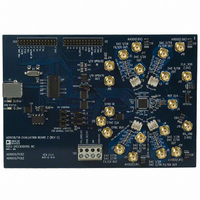AD9959/PCBZ Analog Devices Inc, AD9959/PCBZ Datasheet - Page 9

AD9959/PCBZ
Manufacturer Part Number
AD9959/PCBZ
Description
BOARD EVALUATION FOR AD9959
Manufacturer
Analog Devices Inc
Datasheet
1.AD9959PCBZ.pdf
(28 pages)
Specifications of AD9959/PCBZ
Design Resources
Phase Coherent FSK Modulator (CN0186)
Main Purpose
Timing, Direct Digital Synthesis (DDS)
Embedded
No
Utilized Ic / Part
AD9959
Primary Attributes
10-Bit DAC, 32-Bit Tuning Word Width
Secondary Attributes
4 Channels
Silicon Core Number
AD9959
Application Sub Type
Frequency Synthesizer
Kit Contents
Board, AD9959 / PCB Installation Software
Silicon Manufacturer
Analog Devices
Lead Free Status / RoHS Status
Lead free / RoHS Compliant
Other names
AD9959/PCB
AD9959/PCB
Q2548077
AD9959/PCB
Q2548077
FEATURE CONTROL WINDOWS
Chip Level Control
The Chip Level Control window provides control of the
features that affect all channels of the AD9959; this window is
not channel-specific. The following describes the sections of the
chip level control window as they are numerically indexed in
Figure 17.
1. LOAD and READ
The LOAD and READ buttons are used to send data and
retrieve register settings. All LOAD and READ buttons found in
the evaluation software have the same functionality.
When new data is detected, LOAD flashes orange, indicating
that you need to click LOAD to send the updates to the serial
I/O buffer where they are stored until an I/O update is issued.
The I/O update sends the contents of the serial I/O buffer to
active registers.
I/O updates can be sent manually (Manual I/O Update) or
automatically (Auto I/O Update). By default, the AD9959
evaluation software is set to Auto I/O Update, so that when
LOAD is clicked, an I/O update signal is automatically sent to
the device. If synchronization across channels is desired, use the
Manual I/O Update button. To do this, uncheck the Auto I/O
Update box and press the Manual I/O Update button when you
wish to send an I/O update (see Figure 18).
2
3
4
Figure 18.
Figure 17. Chip Level Control Window
Rev. 0 | Page 9 of 28
Click READ to perform a readback of the current state of the
settings and update the GUI with those settings.
2. Clock
The Clock section allows the user to configure the reference
clock path in the AD9959.
Ref Clock inputs the operating frequency of the external
reference clock or crystal. The maximum reference clock
frequency of the AD9959 is 500 MHz, which is the default
setting of this box. A red outline indicates that the value entered
is out of range. (See Figure 19).
Multiplier selects the PLL multiplication factor (4× to 20×) by
which to scale the input frequency. The default setting of this
box is Disabled, indicating that the Ref Clock Multiplier
circuitry is bypassed and the Ref Clock/Crystal input is piped
directly to the DDS core.
Figure 19.
5
6
1
AD9959/PCB













